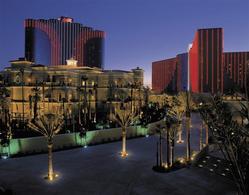






ESPN Remains Pleased with November Nine Poker ConceptFlat Ratings for 2009 Finale Don't Deter ESPN's Enthusiasm for the Delay |
|
|

Doug White, ESPN’s senior director of programming and acquisitions, says that he wasn’t too surprised that Ivey’s presence didn’t translate into higher ratings.
“Look, the attention that Phil was getting — E:60, the cover of ESPN The Magazine — this is part of everyone’s effort to grow the sport. We’re all trying our hardest to get these players out into the ‘mainstream,’ to become recognizable to sports fans,” said White.
“I thought this year was one of the best concerted efforts that we’ve all had to try to do that, so I wasn’t disappointed. I was very happy, as far as ESPN goes. I was very happy with our efforts, in some way, to introduce Phil to the general sports public.”
The 2009 final table attracted 2.1 million viewers on ESPN and a 1.8 household coverage rating, down slightly from its 1.9 rating in 2008. But the 15-week season, which included 31 telecasts, did see an increase in terms of its averages for households (up 9 percent to 1,024,901) and viewership (up 7 percent to 1,228,008), according to ESPN.
“I was happy that we ended the season up, overall. We had a terrific year … We were up in all of our major demographics, which is fantastic,” said White. “Would I have liked to have been up on the final table? Yes, but … I thought the presentation was fantastic, and ultimately we ended up for the entire season, so I don’t know if there is really a downside.”
Although there wasn’t an increase in ratings for the finale, ESPN believes the delayed final table increased interest for the season as a whole and is pleased with the concept moving forward.
“I think it helps increase the hype. It allows us to tell stories … I just can’t see how anybody who is actually at the event doesn’t think this is good for poker and doesn’t get goosebumps watching that,” said White. “Do the poker purists like it? No, probably not. But I think people are starting to turn the corner … and no one has been able to tell me how it’s hurt the game.”
Adjustments to 2009 Final Table Broadcast
Some poker fans were probably glancing at their watches during the main-event broadcast, wondering how ESPN was possibly going to fit everything into its allotted two-hour time slot. More than half way into the broadcast, seven of the nine players still remained. The good news was that ESPN didn’t fit it all into the two-hour block.
“As I was sitting in the back with our production crew, they just kept saying to me: ‘There are so many good hands. There are so many good hands,’” said White. “In the off-season, we talked about (adding more content), and we did that this year, adding 30 minutes more than we had last year.”
ESPN’s senior director of communications, George McNeilly, said that there were pros and cons with that decision.
“On the one hand, the decision was made to serve sports fans and show them more hands. On the other hand, some of the chatrooms have been complaining that their Tivo scheduling had gone awry because we went over the two-hour allotted block. But we absolutely got out there and said we might go long if it was warranted,” said McNeilly, referencing reports earlier in the week where his colleague Jamie Horowitz told media that ESPN could go longer if need be.
But while some poker fans might have bickered about their Tivo, it didn’t even compare to the level of discontent that was voiced about the 2008 broadcast, where only two hands were shown from Peter Eastgate’s and Ivan Demidov’s lengthy heads-up battle.
White also commented on the new one-day break in between the final table (when they played down from nine to two) and the heads-up match.
“I think that one-day break made for a better show,” said White. “I think having the off-day on Sunday really helped our production, giving our guys kind of a chance to recover from the late night on Saturday.”
With respect to the future, White says the sky is the limit.
“There are a lot of other things that we can do to enhance the sport, to make it more interesting to our viewers,” said White, who declined to give specific examples. But he did say that poker fans can look forward to World Series of Poker Europe coverage, which should begin in late January or early February.
